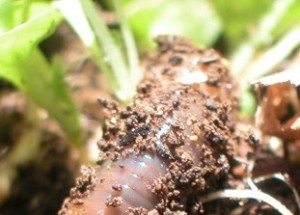
With large font and an enormous amount of consecutive question marks, a reader wrote to us to ask about a black worm in her bathroom. The worm is about seven centimeters (slightly less than three inches) in length, which is relatively long for a bathroom pest. (Larvae, the most common creature to find in a bathroom in our experience, are generally several times shorter.) The reader says the worm has no “texture” on its body, by which she means it has smooth skin, and the worm evidently has a titanic tolerance for Raid and other insecticides, as it didn’t die after being continually sprayed for 10 to 15 minutes. The reader is wondering, one, what the long black worm is (if it even is a worm) and, two, where it came from.
With no picture, the question becomes quite difficult to answer. We have a few suspicions as to what our reader found, and these suspicions could be fairly easily confirmed with a photo. For instance, it’s possible our reader found some type of millipede, which can certainly be a few inches long, and they are often brown or black too. If we could see in a picture that the creature has lots of legs, we could confirm this hypothesis. The same principle applies to slugs, which can often be recognized by their optical tentacles (i.e., the slug’s “eyes,” which are actually eyespots that sense light). Slugs can also be black and a few inches long, so our reader might have found one, but this is impossible to confirm.
Even without a picture, though, we do think these are two plausible possibilities, especially the slugs. Certainly they are more likely to be described as textureless than are millipedes (which are segmented, although often not abruptly), and not all of them have elongated “slug eyes.” And even if what our reader found did have noticeable optical tentacles, we suppose this is more likely to be omitted from a question than dozens of small legs. In other words, it’s harder to miss a millipede’s legs than a slug’s tentacles. To be sure, though, millipede legs are not always immediately evident. They are tucked under the creatures’ bodies (unlike the legs of centipedes), and they can be quite small.
If the creature has no obvious distinguishing characteristics, it could also be a regular earthworm. Although generally brown or reddish, earthworms can definitely be black or almost black, and as is the case with millipedes and slugs, it would not be at all uncommon to find one that is about seven centimeters long. Many people would recognize an earthworm, though, and their bodies have clitella, so they are not entirely without markings. Regardless of what our reader found, the creatures got into her bathroom because of some opening to the outside world that allowed this. In bathrooms, sometimes worms and other creatures will get into the pipes in the slabs that are underneath bathtubs and showers, or they might simply go through an opened window.
As for why the creature was so resistant to insecticides, we have no solid answer, primarily because we don’t recommend their use. So, we don’t have much experience dealing with pesticides, nor are we particularly knowledgeable about their relative effectiveness. However, we do know that different chemicals are used in different pesticides, and creatures are affected by these various chemicals in different ways, so perhaps the reader was simply administering something ineffectual to whatever she found. Moreover, the effectiveness of insecticides decreases over time, so it might also be that our reader was using out-of-date products.
To conclude, we are not entirely sure what the long, black “worm” our reader found is. It could be a worm (i.e., an earthworm), but it could also be a millipede or slug. Given the reader’s plain description of the creature, we suppose we have to lean toward the earthworm and slug hypotheses, although we do not often hear of either creature being found in houses. It is more common for readers to ask about millipedes, but when they do, they generally point out all the creature’s legs. In any case, we encourage our reader to look into these three possibilities, which will hopefully enable her to discover exactly what she found.
All About Worms is always free, always reader-supported. Your tips via CashApp, Venmo, or Paypal are appreciated! Receipts will come from ISIPP Publishing.



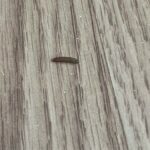

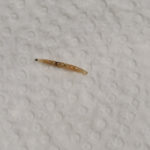
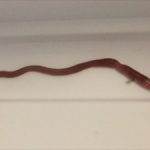
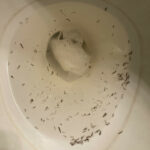
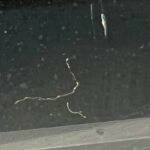
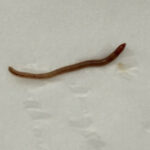
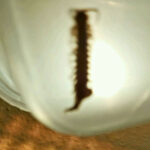




I just found two of these my brand new completely created bathroom (it was a laundry room converted into a very nice bathroom.
I took a picture, but not sure how to attach it. It is about three inches long, black, and thin.
They are worms. I have them too but I live in a tropic region. They look very much like earthworms only darker in colour. I have one dying a slow death near my kitchen sink as I type this. Wanted to know about them to decide to save it or end it’s suffering. Anyway they are kinda nasty but I assume harmless. I’m in an old building with big scary drains and I suspect it gives them a good breading spot. I would like to eliminate them entirely but don’t want to go dumping quantities of bleach down every drain. Besides they could be on the upper sides so it wouldn’t be effective. I am now mostly surprised at the lack of knowledge about these critters. Almost every site dismisses them as drain fly larvae despite the descriptions to the contrary. They are just like earthworms about 3 inches long but darker and on average thinner than the ones I dig up for fishing.